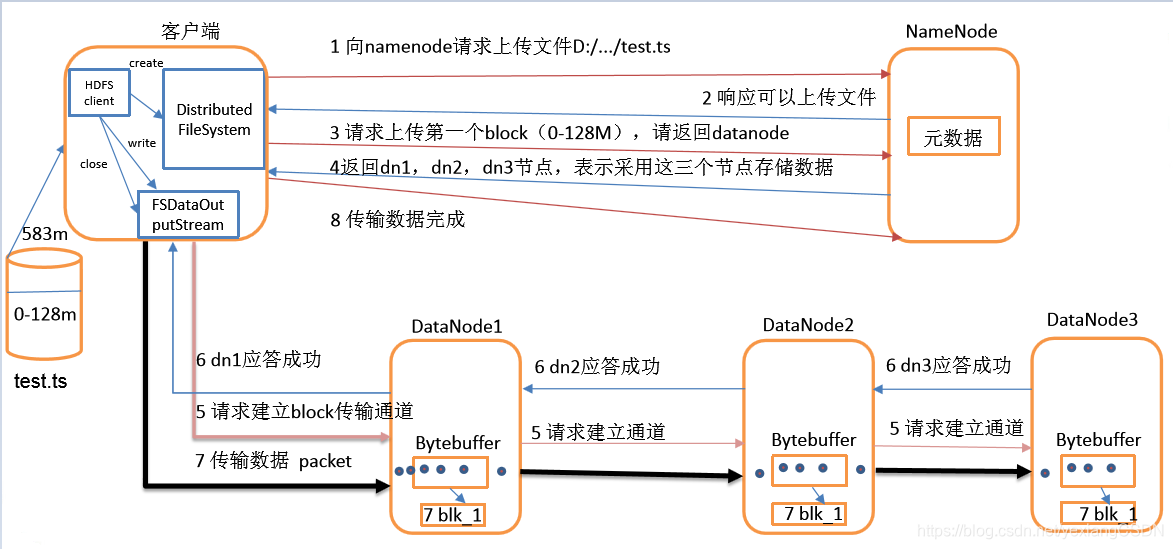《大数据: Hadoop(HDFS) 读写数据流程分析》
本文共 269 字,大约阅读时间需要 1 分钟。
一、HDFS的写数据正常流程

- ①. 服务端启动HDFS中的NN和DN进程
- ②. 客户端创建一个分布式文件系统客户端,由客户端向NN发送请求,请求上传文件
- ③. NN处理请求,检查客户端是否有权限上传,路径是否合法等
- ④. 检查通过,NN响应客户端可以上传
- ⑤. 客户端根据自己设置的块大小,开始上传第一个块,默认0-128M,NN根据客户端上传文件的副本数(默认为3),根据机架感知策略选取指定数量的DN节点返回
- ⑥. 客户端根据返回的DN1,DN2,DN3节点,请求建立传输通道客户端向最近(网络举例最近)的DN1节点发起通道建立请求,
转载地址:http://lkut.baihongyu.com/
你可能感兴趣的文章
Nitrux 3.8 发布!性能全面提升,带来非凡体验
查看>>
NiuShop开源商城系统 SQL注入漏洞复现
查看>>
NI笔试——大数加法
查看>>
NLog 自定义字段 写入 oracle
查看>>
NLog类库使用探索——详解配置
查看>>
NLP 基于kashgari和BERT实现中文命名实体识别(NER)
查看>>
NLP 模型中的偏差和公平性检测
查看>>
Vue3.0 性能提升主要是通过哪几方面体现的?
查看>>
NLP 项目:维基百科文章爬虫和分类【01】 - 语料库阅读器
查看>>
NLP_什么是统计语言模型_条件概率的链式法则_n元统计语言模型_马尔科夫链_数据稀疏(出现了词库中没有的词)_统计语言模型的平滑策略---人工智能工作笔记0035
查看>>
NLP三大特征抽取器:CNN、RNN与Transformer全面解析
查看>>
NLP学习笔记:使用 Python 进行NLTK
查看>>
NLP度量指标BELU真的完美么?
查看>>
NLP的不同研究领域和最新发展的概述
查看>>
NLP的神经网络训练的新模式
查看>>
NLP采用Bert进行简单文本情感分类
查看>>
NLP问答系统:使用 Deepset SQUAD 和 SQuAD v2 度量评估
查看>>
NLP项目:维基百科文章爬虫和分类【02】 - 语料库转换管道
查看>>
NLP:使用 SciKit Learn 的文本矢量化方法
查看>>
nmap 使用方法详细介绍
查看>>